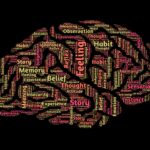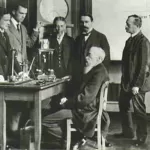Introduction:
Attitudes, values, and interests play significant roles in shaping human behavior and social interactions. They influence our thoughts, emotions, and actions, impacting how we perceive and relate to the world around us. In this blog post, we will delve into the definitions of attitudes, values, and interests, explore their components, examine how they are formed and maintained, discuss the measurement techniques used to assess them, analyze theories of attitude change and value fostering, explore the formation of stereotypes and prejudices, and touch upon recent trends in the field.
1. Definitions of Attitudes, Values, and Interests:
- Attitudes: Attitudes are psychological dispositions that influence our evaluations, beliefs, and behaviors towards people, objects, and situations. They can be positive, negative, or neutral, and can range from strong to weak.
- Values: Values are enduring beliefs and principles that guide our choices, actions, and judgments. They represent what is important to individuals and societies and serve as guiding principles for behavior.
- Interests: Interests refer to the preferences, curiosities, and passions individuals have towards particular topics, activities, or areas of knowledge. They influence our motivation, engagement, and involvement in various aspects of life.
2. Components of Attitudes:
Attitudes are composed of three key components:
- Cognitive Component: This component involves our thoughts, beliefs, and knowledge about a particular subject. It includes our understanding and evaluation of the object of our attitude.
- Affective Component: The affective component pertains to the emotional aspect of attitudes. It involves our feelings, emotions, and affective responses towards the object of our attitude.
- Behavioral Component: The behavioral component reflects our behavioral tendencies and intentions in relation to the object of our attitude. It encompasses our actions, expressions, and behavioral responses.
3. Formation and Maintenance of Attitudes:
Attitudes are shaped through various processes, including:
- Socialization: Attitudes are often acquired through socialization processes, where individuals learn attitudes from family, friends, educational institutions, media, and cultural norms.
- Personal Experience: Personal experiences, both direct and indirect, can shape attitudes. Positive or negative encounters with an object or situation can influence attitude formation.
- Cognitive Consistency: People tend to maintain consistent attitudes to reduce cognitive dissonance—the discomfort that arises from holding conflicting beliefs or values.
4. Measurement of Attitudes, Values, and Interests:
Measuring attitudes, values, and interests is crucial for research and understanding human behavior. Common methods include:
- Self-Report Measures: Surveys, questionnaires, and rating scales are commonly used to measure attitudes, values, and interests. Participants rate their agreement, preference, or level of interest on various items.
- Implicit Measures: Implicit measures assess attitudes and values indirectly, capturing subconscious or automatic associations through techniques like the Implicit Association Test (IAT).
- Behavioral Observation: Attitudes and values can be inferred through direct observation of behavior in specific contexts or situations.
5. Theories of Attitude Change and Strategies for Fostering Values:
- Cognitive Dissonance Theory: This theory suggests that individuals strive for consistency between attitudes and behaviors. When inconsistencies arise, they experience discomfort and are motivated to change attitudes or behaviors to restore harmony.
- Elaboration Likelihood Model (ELM): The ELM proposes that attitude change can occur through two routes: the central route (careful evaluation of information) and the peripheral route (relying on cues and heuristics). Persuasion strategies differ based on these routes.
- Social Influence and Norms: Social influence, such as conformity and obedience, can shape attitudes and values. Norms, both descriptive (what others do) and injunctive (what others approve of), play a role in fostering values.
6. Formation of Stereotypes and Prejudices:
- Stereotypes: Stereotypes are generalized beliefs and expectations about a social group. They can be based on race, gender, age, or other characteristics. Stereotypes can influence attitudes and behaviors towards individuals belonging to the stereotyped group.
- Prejudice: Prejudice refers to negative attitudes and feelings held towards individuals based on their membership in a particular group. Prejudices can lead to discrimination and bias in social interactions.
7. Changing Others’ Behavior:
- Social Learning Theory: According to this theory, behavior can be learned and changed through observation, imitation, and reinforcement. Positive role models and social reinforcement can facilitate behavior change.
- Persuasion and Communication: Effective persuasion techniques involve presenting compelling arguments, appealing to emotions, providing social proof, and building credibility.
8. Theories of Attribution:
- Attribution Theory: Attribution theory explores how individuals explain the causes of behavior, either attributing them to internal factors (personality, character) or external factors (situational influences). Attribution affects attitudes, perceptions, and expectations of others.
9. Recent Trends:
- Intersectionality: Intersectionality examines the interconnectedness of social categories such as race, gender, class, and sexuality, recognizing that individuals hold multiple identities and experiences.
- Social Media and Online Influences: The rise of social media has significantly impacted attitudes, values, and interests. Online platforms provide opportunities for the dissemination of information, social influence, and the formation of virtual communities.
- Well-being and Positive Psychology: Recent trends emphasize the importance of well-being and positive psychology, focusing on fostering positive attitudes, values, and interests to enhance individuals’ overall satisfaction and happiness.
Conclusion:
Attitudes, values, and interests are integral aspects of human psychology and social dynamics. They shape our perceptions, behaviors, and interactions with others. Understanding the components, formation, measurement, and change of attitudes and values provides valuable insights for individuals, researchers, and policymakers. By recognizing the impact of attitudes, values, and interests, we can strive for a more inclusive, tolerant, and harmonious society.







